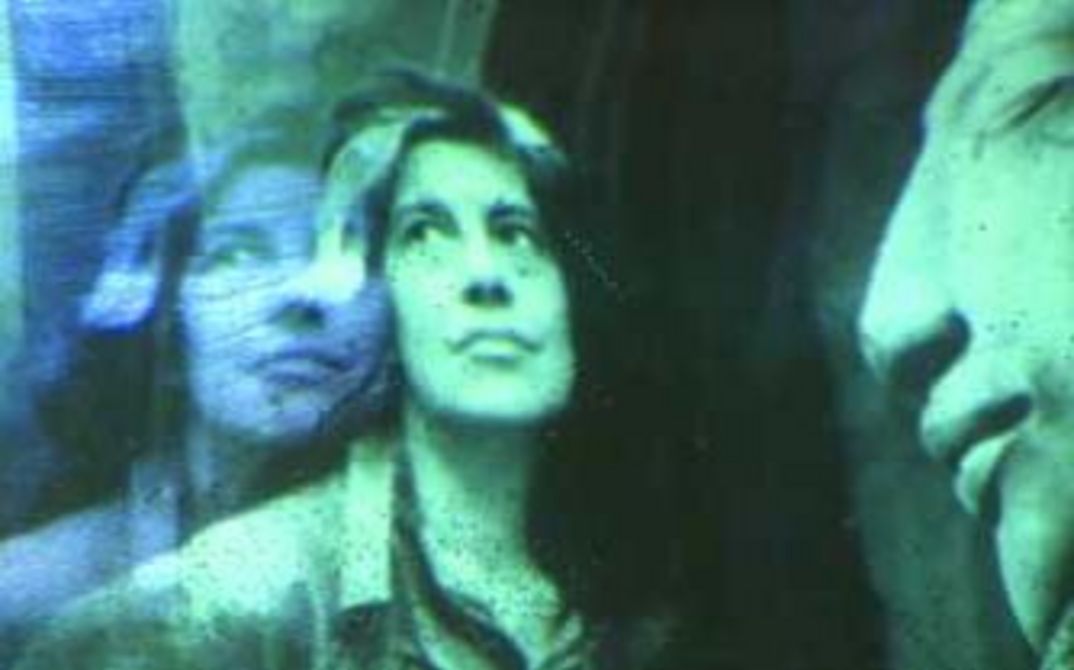At the beginning of the 1990s, Susan Sontag was a guest of the DAAD in Berlin and she "worked" with us. In a program that she curated in November 1990 she described Arsenal - still in Welserstraße at the time - "as the cinema that I love best on the whole planet."
DUETT FÖR KANNIBALER (Duet For Cannibals, Sweden 1969, 23.1., Introduction: Kristina Jaspers & 26.1.) In Susan Sontag's debut film, a German leftist intellectual and his Italian wife pretend to be cannibals, precipitating a young couple into a maelstrom of emotional chaos. Partners are exchanged, wigs tried out, beards stuck on and faces wrapped in gauze bandages. It all appears to be a game, but it's about existential questions, about life and death. Andy Warhol's SCREEN TEST (USA 1964) with Susan Sontag playing herself will be shown before the main feature.
BRÖDER KARL (Sweden 1971, 20. & 28.1., Introduction: Ralph Eue) Sontag's next film was also made in Sweden. It features two couples: First Karen and Peter, whose relationship is characterized by cold and rejection. Their six-year-old daughter is schizophrenic and refuses to talk. The second couple are Lena and Martin, who have been divorced for five years. Lena is an actress, Martin is a burnt-out theater director. He has withdrawn to an island where he looks after the former ballet star Carl for whose nervous breakdown he somewhat feels responsible. Lena travels to the island with Karen in the hope of getting her husband back. Something unsayable hangs above them all like a curse; there is a strange atmosphere - between unrest and lethargy, always just short of an outburst of violence. Susan Sontag saw the film as "a winter's tale shot in late summer - far north". Shot in black-and-white, the "present time" of the film does not seem to be the result of a past story but the prequel itself of events still to come. Another SCREEN TEST (Andy Warhol, 1964) with Susan Sontag will be shown before the main feature.PROMISED LANDS/LA DÉCHIRURE(F 1974, 21. & 1.2.) Susan Sontag's cinematic works often corresponded to biographical or geographical happenstance, as well as to the opportunities for determined intervention. This project, shot in Israel right after the end of the Yom Kippur War, was an integral component of the "furious reporter episodes" of her life and work. Sontag resisted the attempt to call the film a documentary, saying it was certainly a film of non-fiction but that it was more of an essay. She once wrote: "I write — and talk — in order to find out what I think." In "As Consciousness Is Harnessed to Flesh: Diaries 1964-1980" she describes her approach to the development of this film about Israel.
A PRIMER FOR PINA (Jolyon Wimhurst, Susan Sontag, GB 1984, 22.1., with an introduction & 5.2.) Susan Sontag developed an explicit interest in dance and ballet in the 1980s. This mid-length film about the work of Pina Bausch is a "televised lecture" from a time that was perhaps a golden age for conveying cultural topics via the screen. Perhaps it was also a blueprint for what Alexander Kluge attempted just a short time later in Germany when he launched his dctp programs.
WAITING FOR GODOT … IN SARAJEVO (Nicole Stéphane, Susan Sontag, F 1993, 22.1.) In April 1993 Susan Sontag travelled to Sarajevo for the first time to visit her son David Rieff who was living in the besieged city and working as a correspondent for US magazines. She returned in mid-July of the same year to stage Samuel Beckett’s play at the "Pozoriste Mladih" (Youth Theater). This film documents the process. Although Sontag worked on the concept and production, she left the directing credits to her former lover Nicole Stéphane, whom she had dedicated her 1977 book "On Photography" to and who had produced PROMISED LANDS. WAITING FOR GODOT … IN SARAJEVO will be screened with A PRIMER FOR PINA. VERHÄNGNIS (Fate, Fred Kelemen, G 1994, 25.1., Guest: Fred Kelemen) Susan Sontag was often described as a "trans-Atlantic mediator" and talked of herself as an American with European interests. She was also a sensitive observer and keen connoisseur of German film. She had clear preferences (and aversions). In her essay "A Hundred Years of Cinema" (1995) she numbered Fate among the best cinematic works of the 1990s. The paths of people from different countries cross in the course of one night. They speak different languages but they are ominously linked in their lonely search for happiness. They plunge deeper with every movement that should free them. The desperate dance of their life becomes the passionate dance of their death.
REGARDING SUSAN SONTAG (Nancy Kates, USA 2014, 24.1., Introduction: Ralph Eue & 30.1.) This portrait of Susan Sontag looks at her life through the lens of archive material, experimental images and comments by friends, family members and colleagues, as well as her own, which are read by the actress Patricia Clarkson.
TOWN BLOODY HALL (D.A. Pennebaker, USA 1979, 24.1., Introduction: Ralph Eue & 30.1.), is a rarity of Direct Cinema which observes a public debate in New York's town hall between different prominent feminists and Norman Mailer after the publication of his novel "The Prisoner Of Sex". Susan Sontag was there but somewhat on the fence. (re)An international symposium taking place on the 29th and 30th January at ICI Kulturlabor Berlin will discuss the continuing relevance of Susan Sontag's work. Thanks to the generous support of the Capital Cultural Fund and the Villa Aurora.



